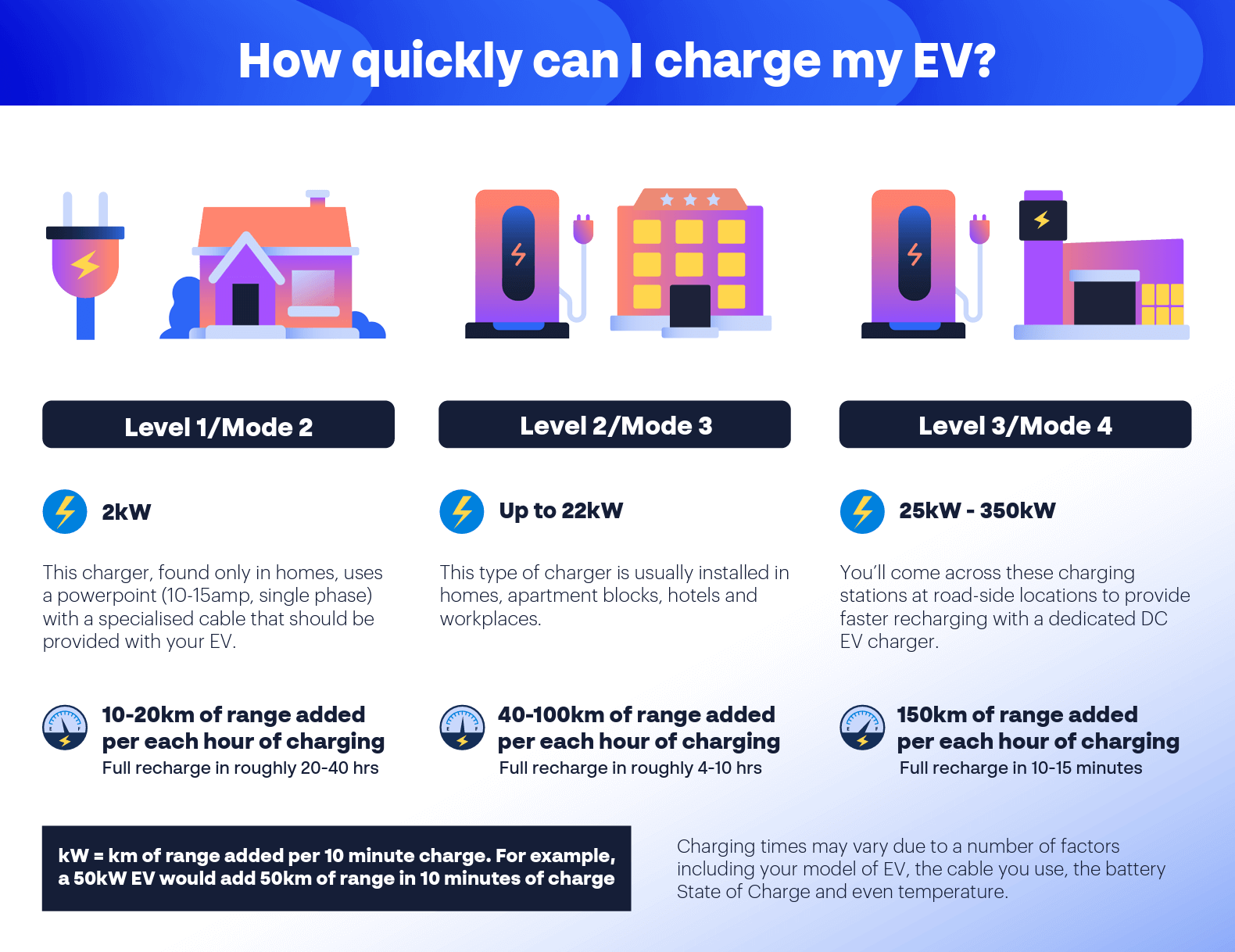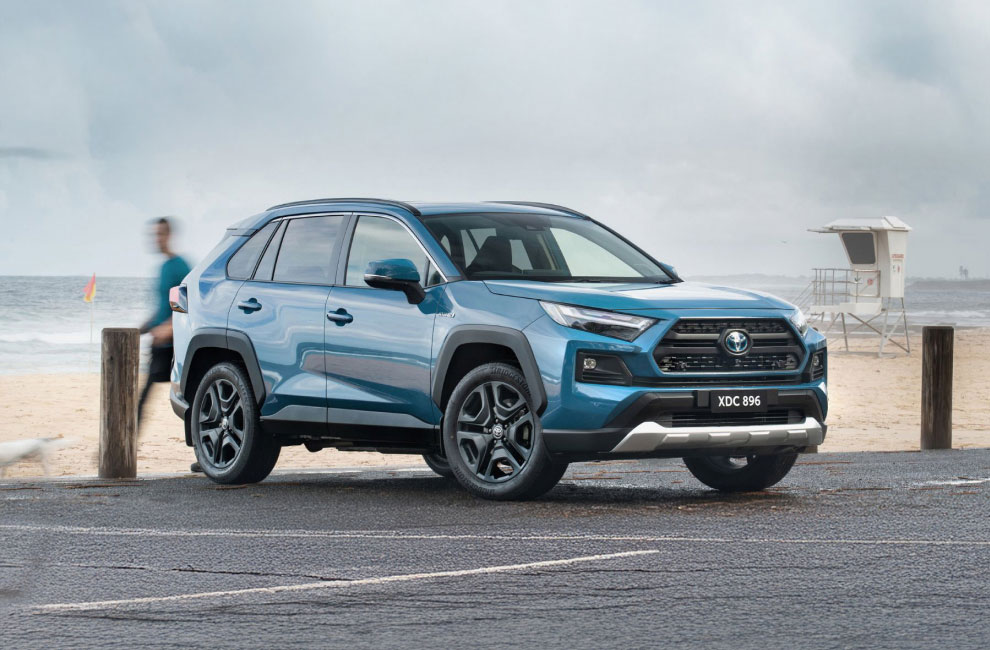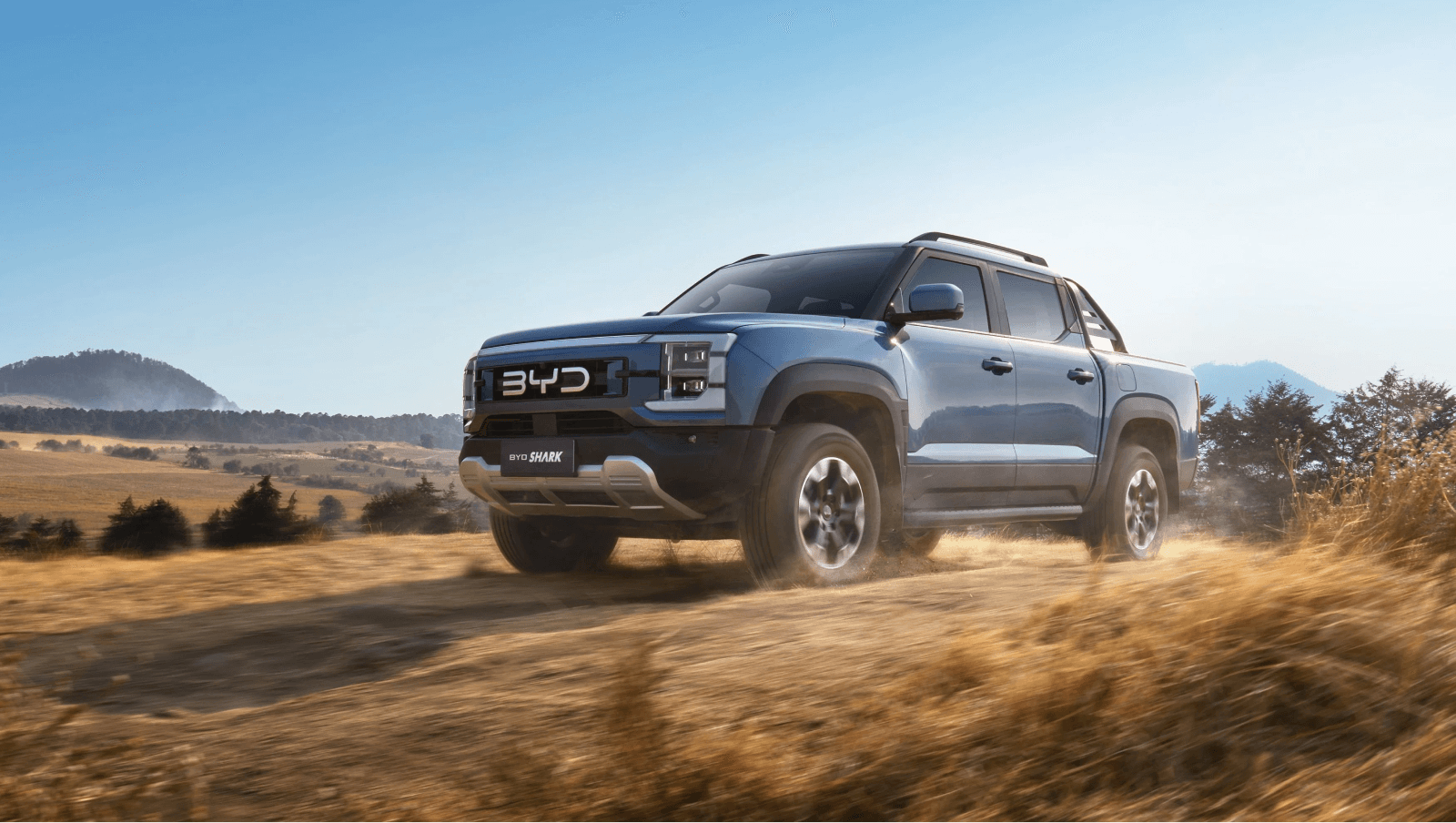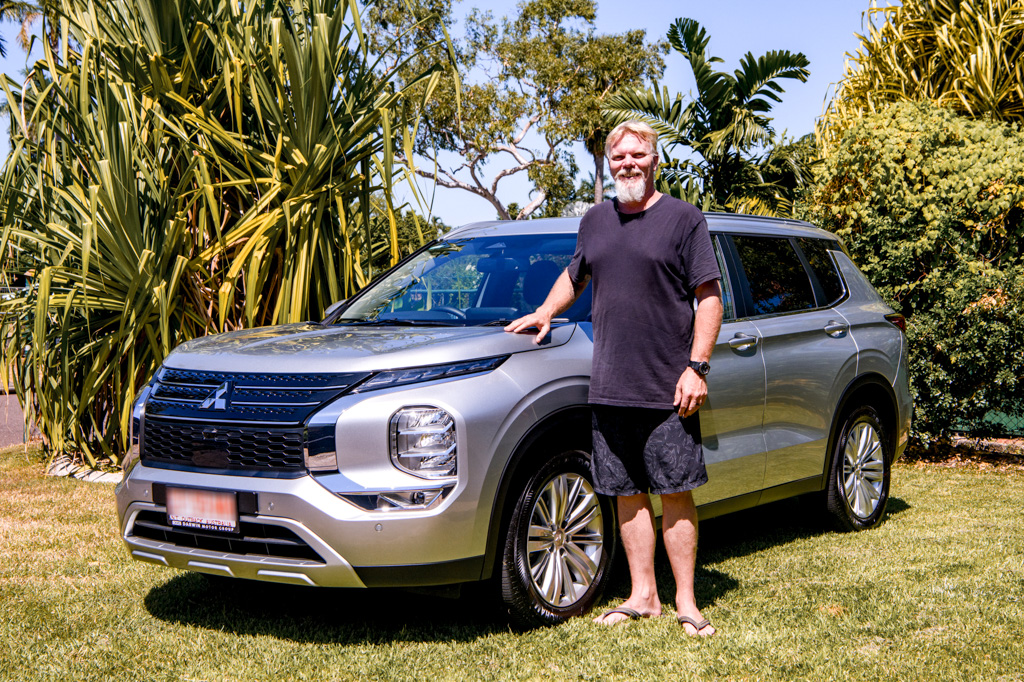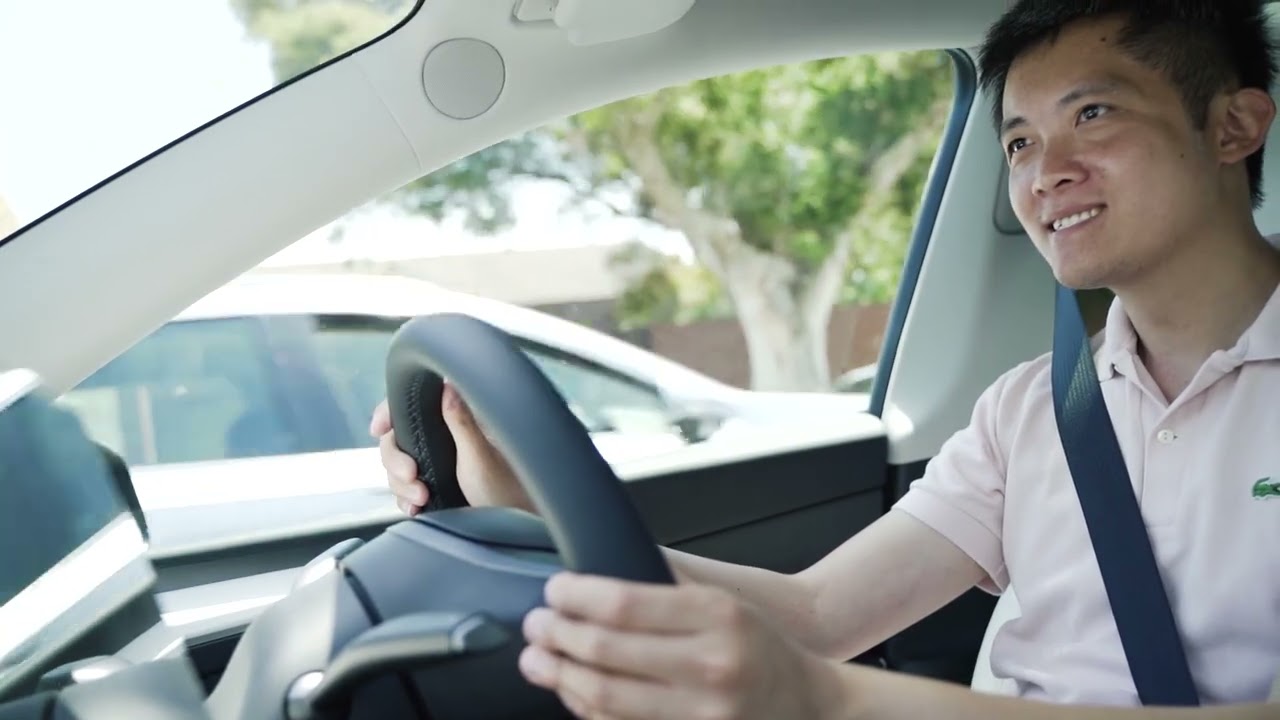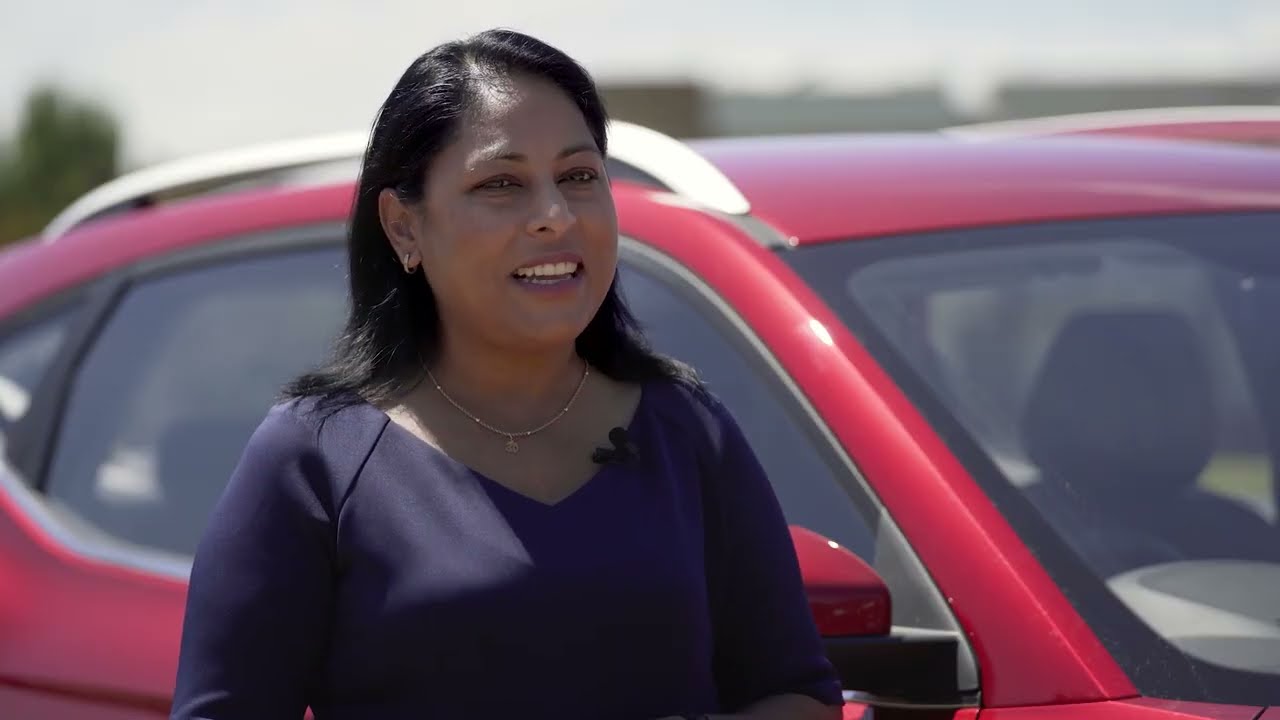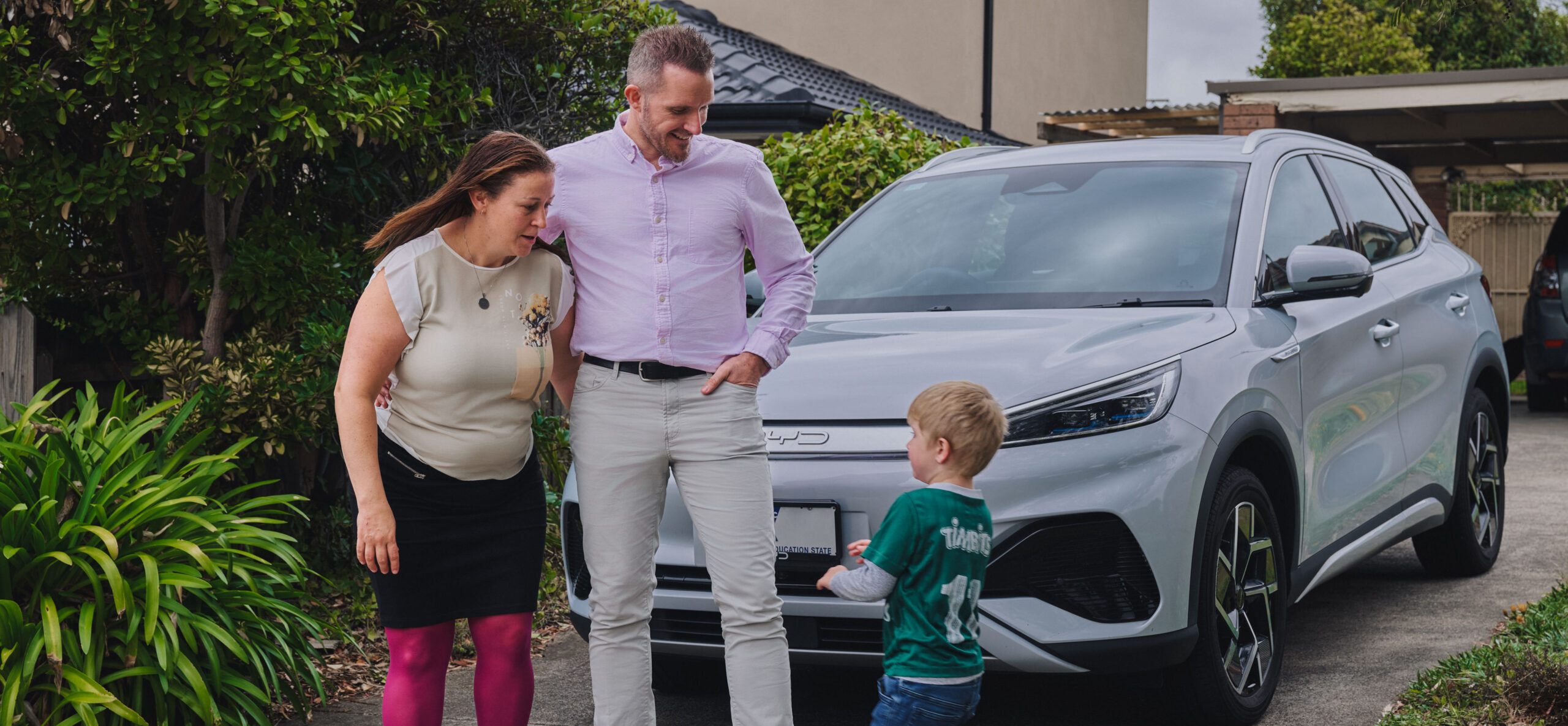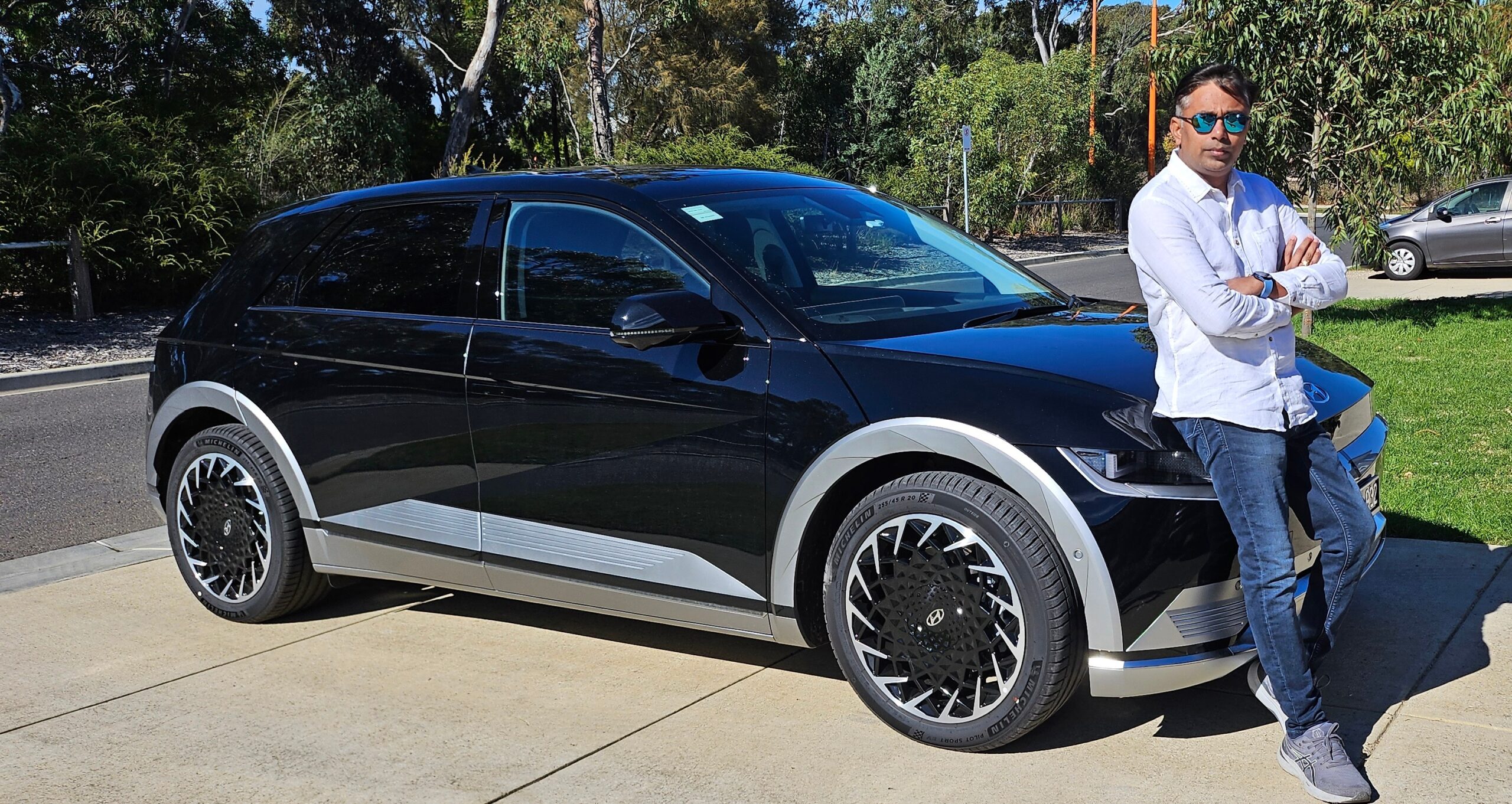If you’re already part of the Electric Vehicle (EV) revolution or about to take the plunge, you may have a few questions about the charging stations in VIC.
This all-encompassing guide is here to address them all and guide you through the maze of all the charging options in the state. It will also show you how to find and use these charging spots.
But let’s start by tackling the elephant in the room: is Victoria’s EV charging network extended enough to keep you cruising?
Let’s find out.
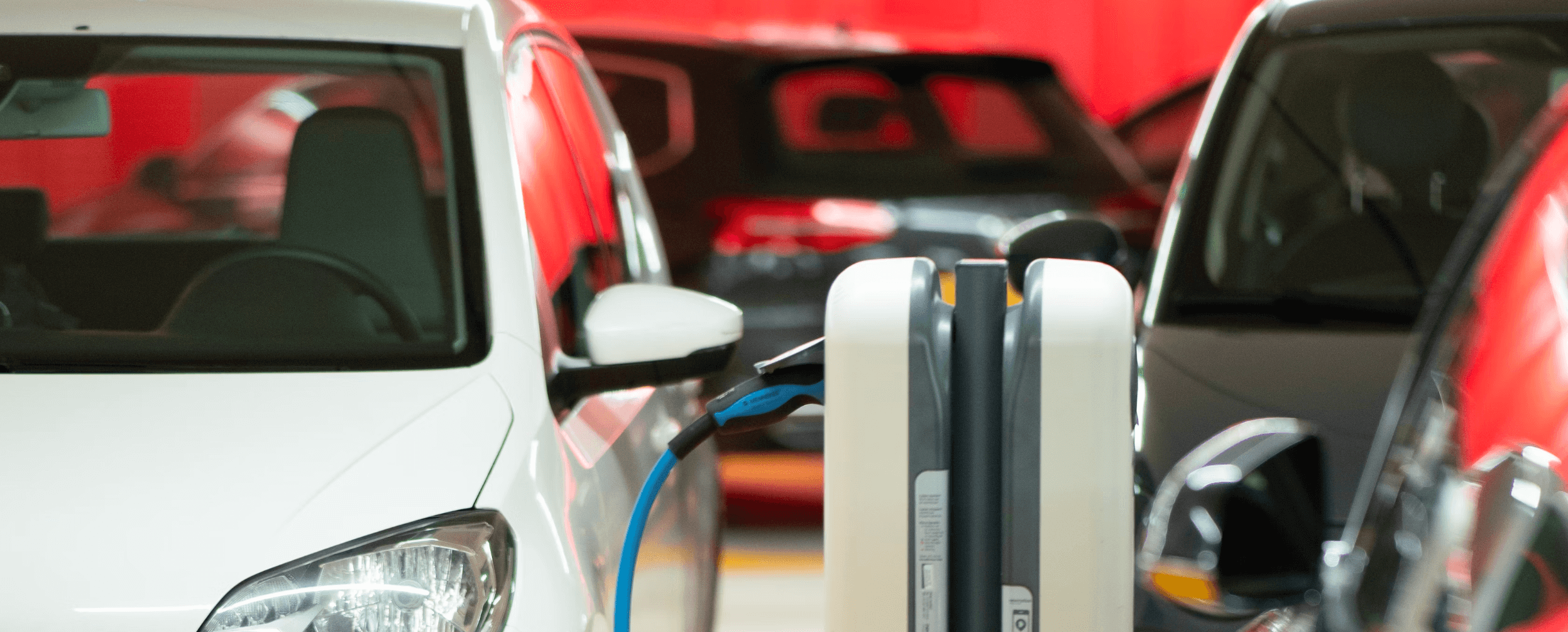
How many EV chargers in Victoria?
When it comes to EV infrastructure, one of the first questions that comes to mind is, “Are there enough charging stations to go around?” And in Victoria, the answer is a resounding yes.
As of mid-2023, Victoria boasts an impressive network of 129 high-power public charging stations out of the 558 chargers in Australia.
| State / Territory | Fast (24kW - 99kW DC) | Ultrafast (100kW DC+) | Total |
|---|---|---|---|
| ACT | 6 | 3 | 9 |
| NSW | 131 | 43 | 174 |
| NT | 3 | 0 | 3 |
| QLD | 93 | 16 | 109 |
| SA | 42 | 9 | 51 |
| TAS | 31 | 5 | 36 |
| VIC | 97 | 32 | 129 |
| WA | 36 | 12 | 48 |
| Grand total | 438 | 120 | 558 |
Source: The Electric Vehicle Council
But that’s not the full picture. When you factor in that many of these locations host multiple charging points, as well as the numerous lower-powered chargers scattered around the state, the true number of stations rises to around 450.
A closer look at the numbers
If we break it down, Victoria has 97 fast chargers, designed for quick top-ups and suited for city driving. In addition, you can find 32 ultrafast chargers, perfect for long-haul journeys and compatible with the latest EV models. These chargers are ideal for anyone travelling significant distances, as they can add hundreds of kilometres of range in just minutes.
Beyond the high-powered units
In addition to the fast and ultrafast chargers shown in the table above, in Victoria you can find less glamorous but equally important standard charging stations. These are often found in residential areas, at shopping centres, and in public car parks. While they may not offer the rapid charging times of their high-powered counterparts, they are invaluable for topping off your battery while you shop, dine, or even sleep.
The big picture
The availability of both fast and ultrafast chargers makes it easier for EV owners to move around the state without “range anxiety” — especially as the network continues to expand and diversify by the day.
The rise of electric charging stations in Victoria
The Victorian Government is accelerating the transition to electric vehicles with a significant investment in charging infrastructure.
With $2.2 million in funding, 214 new electric vehicle chargers will be installed across 116 sites.
These installations are part of four innovative projects, each designed to meet different needs:
- Transportable solar chargers. This project will deploy four transportable, stand-alone solar-powered battery and electric vehicle chargers. These units can be moved to popular holiday destinations during periods of peak demand, like the summer holidays.
- Street light charging points. In a move to integrate charging into everyday urban infrastructure, this project will install 100 electric car chargers on street light poles across three inner-city council areas.
- Residential building integration. Not all chargers are for the public. This project will see the installation of 10 electric vehicle charging outlets in an apartment complex car park, ahead of the 2022 National Construction Code requiring such installations.
Smart-connected home and business chargers. This ambitious project aims to install 100 smart-connected chargers in homes and businesses. These chargers can detect surplus solar energy and use it to charge electric vehicles efficiently.
These initiatives align with Victoria’s ambitious target: to make 50% of all new car sales electric by 2030 as part of its road to net-zero emissions by 2045.
Tesla's plans
In addition to these government-led efforts, private companies like Tesla are also contributing to the electric charging infrastructure.
By the end of next year, Tesla plans to extend its network of rapid-charging stations from Melbourne, through New South Wales, up to Brisbane.
The link between Sydney and Melbourne has already been completed, featuring superchargers in locations like Goulburn and Wodonga, and soon-to-be-permanent ones in Euroa and Gundagai.
EV charging stations in Melbourne
As Victoria’s capital city, Melbourne is fully embracing the rEVolution. The City of Melbourne’s Transport Strategy 2030 supports a transition to electric vehicles powered by renewable energy.
City initiatives:
- Building chargers. Melbourne is focusing on installing charging stations into buildings to reduce the need for on-street charging where the demand for space is very high.
- On-street charging assessment. The City is currently identifying suitable locations for on-street charging stations where building charging is not viable and space allows, such as in certain residential parking permit areas. Where installed, on-street vehicle-charging facilities will be paid for by users.
- Queen Victoria Market upgrade. Melbourne has already installed 12 new chargers in the Queen Victoria Market’s underground car park.
- Future plans. Investigations are underway to explore if it’s possible to install additional chargers in other off-street car parks managed by the City.
Where to charge your EV
Melbourne boasts the densest network of public electric vehicle charging stations in Victoria. These are strategically located at various convenient places such as shopping centres, supermarkets, hotels, off-street car parks, and even petrol stations — including 12 chargers in the new underground car park at the Queen Victoria Market.
For those looking for a comprehensive list of available charging stations in Melbourne, Plugshare is the go-to resource for up-to-date information.
Map of EV charging stations in Victoria
Whether you’re travelling along the scenic Great Ocean Road or cruising through the Yarra Valley, you’ll never be far from a charging point. How can you locate them on a map?
Companies like PlugShare, Chargefox, and the EV Council offer real-time maps that not only locate nearby stations but also provide crucial information such as charging speed, payment methods, and even user reviews.
Did you know that you can now plan an EV road trip with Google Maps’ charging feature? If you have Google Maps installed on your EV, you can manage charging along your route. Thanks to the navigation app, you’ll never run out of power before finding a charging station.
Here are the best interactive maps you can bookmark:
Costs of running an EV in Victoria
The cost of charging an EV in Victoria varies depending on the network and type of charger used, but it’s generally more affordable than filling up a petrol or diesel car with fuel.
The average cost of public electric car charging in Australia is around $0.45 per kWh for a 50kW DC fast charging station.
Charging at home is cheaper, with an average cost for at-home charging in Australia being around $0.20 per kWh. In addition to the cost of electricity, the Victorian government has introduced a road usage charge for zero and low emission vehicles (ZLEVs) registered in Victoria.
The charge is 2.8 cents per km for electric and hydrogen vehicles and 2.3 cents per km for plug-in hybrid electric vehicles, and is intended to ensure that all road users pay their fair share towards the maintenance of road infrastructure.
On the other hand, there are various incentives and benefits available for EV owners in Victoria, such as a $100 discount on registration fees annually and exemption from the ‘luxury vehicle’ rate of stamp duty.
Let’s not forget the incentives from the federal government. In Australia, new EVs and PHEVs purchased after 1st July 2022 that are priced below the luxury car threshold of $89,332 are exempt from Fringe Benefits Tax (FBT). This tax exemption provides an opportunity to salary package an EV through your employer and enjoy significant tax benefits.
Discover how Flare can reduce your car running costs and help simplify your life by switching to an EV novated lease.
The charging process in Victoria
In Victoria, you have plenty of options for recharging your EV that fit with your daily life. At home? Tick. In the office, out shopping, or grabbing a coffee? Tick, tick and tick.
How long does it take to recharge in Victoria?
The duration of charging varies depending on the type of charger and your vehicle’s battery capacity. Fast DC chargers can provide up to 80% charge in roughly 20-30 minutes.
Here’s a handy table outlining the range you can expect to gain per hour and per 15 minutes of charging:
| Charge rate (kW) | Range gained per hour | Range gained per 15m |
|---|---|---|
| 2.2 | 15km | 3.75km |
| 3.7 | 25km | 6.25km |
| 7.7 | 40km | 10km |
| 11 | 65km | 16.25km |
| 22 | 130km | 32.5km |
| 50 | 300km | 75km |
| 150 | 900km | 225km |
| 350 | 2,000km | 500km |
Source: NRMA
Several variables can influence how quickly your vehicle charges. Here are some key factors to keep in mind:
- Charging level and mode. For an in-depth guide to the various types of charging stations, read our guide to EV charging stations in Australia.
- Charging points, plugs, and cables. Some charging equipment can handle higher power outputs, leading to quicker charging times.
- On-board charging capacity and battery size. EVs have different maximum charge rates.
- Battery State of Charge (SoC). Charging tends to be faster when the battery is at a lower SoC and slows down as it nears 80% or higher.
- Battery temperature. Extreme weather conditions can impact the rate at which your battery charges.
Let’s see how this works in real life:
How far can you drive on a full charge in Victoria?
The driving range of an EV varies significantly depending on several factors, such as the specific make and model of the car, battery health, driving conditions, and even the weather.
Most electric vehicles in the market, including popular models like the Tesla Model 3, BMW iX, and Kia EV6, offer a driving range between 250 and 300km on a single full charge.
In Victoria, the average commute is around 16.2km from the place of residence, which is well within reach of most EVs. A Level 2 home charger can easily recharge your car overnight, ensuring you have more than enough range for your daily activities.
And if you’re looking for an easy way to tell if an EV will meet your needs, simply look at the manufacturer’s claimed range and consider your lifestyle and driving habits.
Victoria — an EV frontier
As Victoria amps up its electric vehicle infrastructure, featuring over 200 fast-charging stations and more in the pipeline, you’re well-supported on your road to an electric future. And don’t forget: charging your EV can also save you money, particularly if you opt for home charging setups.
Say goodbye to range anxiety. Most of the latest electric vehicles can travel between 250 and 300km on a full charge. Considering that the typical daily commute in Victoria is well below this range, and fast-charging stations can top up your battery in roughly 20 minutes, running out of juice is a fear of the past.
Thinking about making the electric switch? Then you should explore a Flare novated lease. It’s a simple way to make the most of the available tax savings and embrace a sustainable lifestyle.
Learn how to unlock these savings and transform your commute today!
FAQs - EV chargers in Victoria
Are there enough EV charging stations in VIC?
Victoria is ramping up its EV infrastructure and currently hosts over 200 fast-charging stations. These stations are strategically situated in and around the cities, along key highways, and in regional areas. The Victorian government is also committed to further expansions, with significant investments on the horizon.
Are EV charging stations free in VIC?
In Victoria, some public EV charging stations do provide free charging. These are usually the slower AC chargers found in public car parks and shopping centres. Many hotels and restaurants also offer complimentary charging for their patrons.
How much does it cost to charge an electric car in VIC?
The cost of using an EV charging station in Victoria fluctuates based on the location and the service provider. Generally, you can expect to pay around $0.55/kWh for fast DC charging. Charging at home remains a more economical choice for most EV owners.
How much does it cost to charge an EV at home in VIC?
For those who charge their electric vehicles at home during off-peak hours, which usually span from 10pm to 7am, the rate varies between $0.25 and $0.35 per kWh. Additionally, if you have solar panels, charging your EV could effectively be free when the sun is shining.
What is the cheapest EV charging network in VIC?
The most cost-effective EV charging network in Victoria is Chargefox, which offers rates as low as $0.50 per kWh for a 50kW DC charging port.
How long does it take to charge an EV at a fast charging station in VIC?
The duration to fully charge an EV can vary widely, depending on both the charger’s capabilities and the size of the vehicle’s battery. In general, DC fast chargers can restore up to 80% battery life in just 20 to 30 minutes.
What is the difference between a fast-charging station and an ultra-fast charging station in VIC?
In Victoria, fast-charging stations typically deliver power ranging from 24kW to 99kW DC, whereas ultra-fast charging stations operate at a minimum of 100kW DC.
How can I access a station?
Accessing a public charging station is usually very easy. You may need an RFID card or a mobile app specific to the charging network (like Chargefox or PlugShare) to start the charging process. Simply follow the on-screen instructions to plug in your vehicle.
How can I pay at EV charging stations in VIC?
Most charging stations in Victoria operate on a pay-as-you-go basis. However, some networks offer subscription plans for frequent users. Payment is often handled through the network’s mobile app or through contactless payment methods at the station.
What is smart charging?
A growing number of smart charging stations are cropping up around Victoria, especially in Melbourne. These chargers also integrate with grid systems to manage energy efficiently; some can even use excess energy from rooftop solar panels to charge vehicles.
Can I plan ahead?
Many digital tools offer real-time status updates on charger availability, so you can plan your journey accordingly. The maps frequently update as new charging stations become part of Victoria’s expanding network.
The charging process in Victoria is designed to be as convenient and flexible as possible, reflecting the state’s commitment to making electric vehicles an integral part of its sustainable future.

